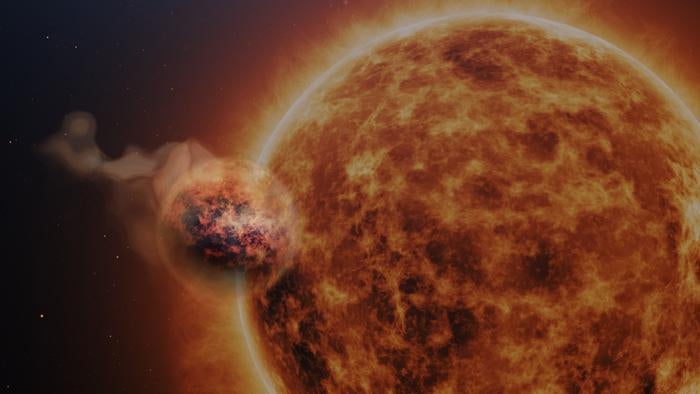Nasa’s James Webb telescope spots collection of shocking materials on distant planet
‘We are unravelling new worlds!’ scientists remark as they uncover unusual atmosphere
Nasa’s James Webb Space Telescope has spotted a “fluffy” planet with an atmosphere made up of a collection of intriguing materials.
The planet has a similar water and cloud cycle to that of our own Earth. But the clouds are made of sand and the clouds are made of silicate.
Other parts of the atmosphere are more like our own and could be an intriguing hint of the telescope’s ability to investigate planets that might be home to distant alien life.
Data gathered using the telescope revealed that WASP-107b - a planet 200 lightyears away that orbits a star in the constellation of Virgo - has a dynamic atmosphere made up of water vapour, sulphur dioxide, and sand clouds.

Scientists say this exoplanet - a planet outside the Solar System - has a cloud cycle similar to Earth, except the droplets are made of sand instead of water vapour.
While clouds have been inferred on other exoplanets, the researchers said their work, published in the journal Nature, is the first instance where astronomers have been able to identify the chemical composition of clouds in a distant planet.
Study author Dr Achrene Dyrek, an astronomer at CEA - a French government-funded research organisation in Paris, said: “JWST enables a deep atmospheric characterisation of an exoplanet that does not have any counterpart in our Solar System, we are unravelling new worlds!”
European astronomers used JWST’s Mid-Infrared Instrument (MIRI) to peer deep into WASP-107b’s atmosphere.
WASP-107b is just a little smaller than Jupiter but its mass is less than 10% of the gas giant.
This makes it one of the lowest density exoplanets known, thus earning the label “fluffy” - like candyfloss.
The fluffiness of this exoplanet allowed astronomers to look much deeper into the atmosphere - roughly 50 times deeper compared to Jupiter - revealing its complex chemical composition.
While the team found the presence of water vapour, SO2, and silicate clouds, they said the greenhouse gas methane (CH4) was notably absent, hinting at “a potentially warm interior”.
Just like clouds on Earth, the sand clouds high in WASP-107b’s atmosphere undergo a continuous cycle of sublimation and condensation.
Study author Dr Michiel Min, a senior scientist at the SRON Netherlands Institute for Space Research, said: “The fact that we see these sand clouds high up in the atmosphere must mean that the sand rain droplets evaporate in deeper, very hot layers and the resulting silicate vapour is efficiently moved back up, where they recondense to form silicate clouds once more.
“This is very similar to the water vapour and cloud cycle on our own Earth but with droplets made of sand.”
The researchers said their work marks “a significant milestone” in understanding more about the climatic conditions of other exotic worlds.
Study author Professor Leen Decin, of KU Leuven in Belgium, said: “The discovery of clouds of sand, water, and sulphur dioxide on this fluffy exoplanet by JWST’s MIRI instrument is a pivotal milestone.
“It reshapes our understanding of planetary formation and evolution, shedding new light on our own Solar System.”
Additional reporting by agencies
Join our commenting forum
Join thought-provoking conversations, follow other Independent readers and see their replies
Comments
Bookmark popover
Removed from bookmarks